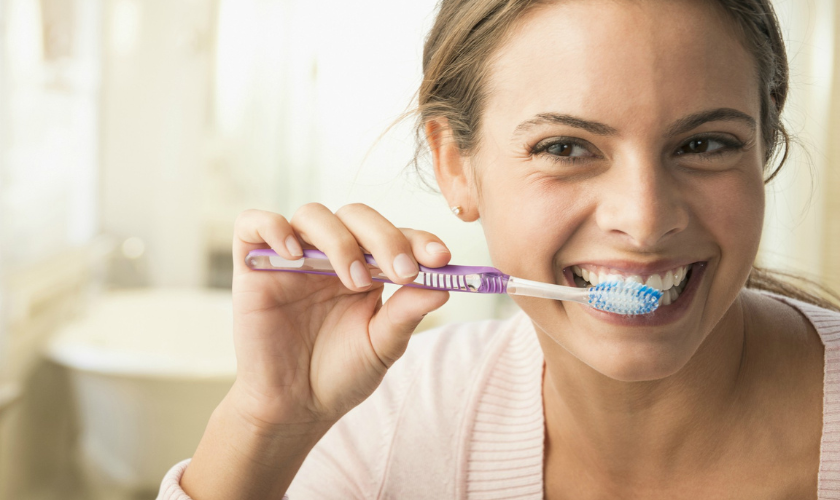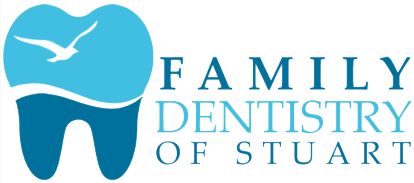5761 SE Federal Hwy, Stuart, FL 34997
The Importance of Flossing for a Healthy Smile

Maintaining a healthy smile goes beyond just brushing your teeth. While brushing is important, flossing plays a crucial role in achieving optimal oral health. As a trusted dentist in Stuart, we understand the significance of flossing and its impact on your dental well-being.
In this blog, we will explore why flossing is essential for maintaining a healthy smile and how it contributes to lifelong oral health.
Removing Plaque and Food Debris
One of the primary reasons why flossing is important is its ability to remove plaque and food debris from areas that a toothbrush cannot reach. Plaque is a sticky film that constantly forms on your teeth, harboring harmful bacteria.
If left unaddressed, plaque can harden into tartar, leading to gum disease and tooth decay. Flossing allows you to clean between your teeth and along the gumline, ensuring that no plaque or food particles are left behind.
By flossing daily, you can effectively remove these substances and prevent the buildup of bacteria, keeping your teeth and gums healthy.
Preventing Gum Disease
Gum disease, also known as periodontal disease, is a common oral health issue that affects many people. It occurs when plaque and tartar accumulate along the gumline, causing inflammation and infection. Regular flossing helps remove these harmful substances, reducing the risk of gum disease.
Flossing not only cleans the areas that brushing can miss but also stimulates the gums, promoting blood circulation and maintaining their health. By incorporating flossing into your daily oral hygiene routine, you can significantly lower the chances of developing gum disease and its associated complications.
Maintaining Oral Health for a Lifetime
When it comes to oral health, prevention is key. Flossing is a preventive measure that helps keep your teeth and gums healthy throughout your lifetime. By removing plaque and food debris regularly, you can prevent tooth decay, cavities, and other dental problems.
This simple act of flossing can save you from costly dental treatments and ensure that you enjoy a healthy smile for years to come.
Flossing Techniques
To get the most out of your flossing routine, it’s important to use the correct technique. Here’s a step-by-step guide:
- Start with a piece of floss approximately 18 inches long.
- Wrap the ends of the floss around your middle fingers, leaving an inch or two of floss to work with.
- Hold the floss firmly between your thumbs and index fingers.
- Gently slide the floss between your teeth using a back-and-forth motion.
- Curve the floss into a C-shape around each tooth and slide it up and down to remove plaque and debris.
- Use a clean section of floss for each tooth.
Remember to be gentle while flossing to avoid injuring your gums. If you’re unsure about the proper flossing technique, consult your dentist Stuart or dental hygienist for guidance.
Flossing Tools
There are various flossing tools available that can make the process easier and more convenient. Traditional dental floss, floss picks, and water flossers are some popular options.
Traditional dental floss is a thin thread made of nylon or plastic that can be maneuvered between teeth. Floss picks are small plastic tools with a piece of floss attached, making it easier to reach the back teeth. Water flossers use a stream of water to remove plaque and debris from between the teeth and along the gumline.
Choose the flossing tool that feels most comfortable and effective for you. Remember, the key is to consistently remove plaque and debris from between your teeth and along the gumline.
Incorporating Flossing into Your Daily Routine
Making flossing a habit is essential for maintaining a healthy smile. Here are some tips to help you incorporate flossing into your daily routine:
- Set a reminder: Place a sticky note on your bathroom mirror or set a reminder on your phone to floss every day.
- Keep floss handy: Keep floss or flossing tools within reach, such as in your bathroom cabinet or purse.
- Make it enjoyable: Listen to music, a podcast, or an audiobook while you floss to make it a more enjoyable experience.
- Lead by example: Encourage your family members to floss by flossing together as a family.
By making flossing a regular part of your daily routine, you can maintain a healthy smile and prevent dental problems in the long run.
Flossing is a vital component of maintaining a healthy smile. By removing plaque and food debris, preventing gum disease, and incorporating flossing into your daily routine, you can enjoy optimal oral health. Remember, consistency is key. So, make flossing a habit and reap the benefits of a healthy smile for a lifetime.
For more information on maintaining good oral health or to schedule an appointment, contact our dental office in Stuart today!
Frequently Asked Questions
Q: How often should I floss? A: It is recommended to floss at least once a day to remove plaque and food particles effectively.
Q: Can flossing replace brushing? A: No, flossing should complement brushing. Both activities are important for maintaining good oral hygiene.
Q: Is flossing painful? A: Flossing should not be painful. However, if you experience discomfort or bleeding, it could indicate gum inflammation, and you should consult your dentist.
Q: Can I use a water flosser instead of traditional floss? A: Yes, water flossers can be an effective alternative to traditional floss. However, it’s important to follow the manufacturer’s instructions and consult your dentist for guidance.
Q: Is flossing necessary if I have braces? A: Yes, flossing is even more crucial when you have braces, as it helps remove food particles and plaque from hard-to-reach areas around brackets and wires. Your orthodontist can guide you on proper flossing techniques for braces.
Remember, regular flossing, along with brushing and regular dental check-ups, is essential for maintaining a healthy smile and overall oral health




